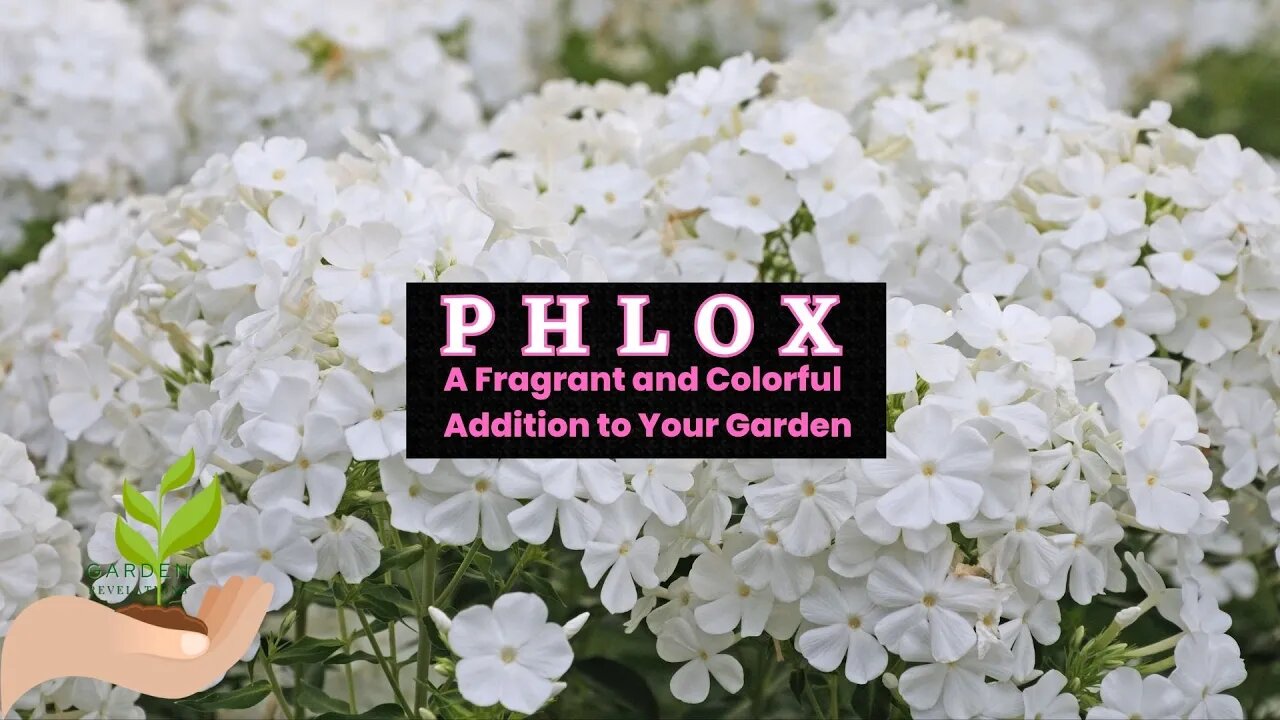Premium Only Content

PHLOX: A fragrant, tall or creeping addition to your flower garden
Phlox is a genus of flowering plants known for their vibrant, fragrant blooms and versatile growing habits. These perennials and annuals offer an impressive display of color, making them a popular choice among gardeners. In this article, we will explore the various aspects of phlox, including their appearance, growing zones, planting, care, and maintenance.
Colors and Appearance.
Phlox is available in a wide range of colors, including shades of pink, purple, red, white, and blue. The flowers are typically star-shaped and form dense clusters atop sturdy stems. Phlox leaves are usually lance-shaped or oval, and their arrangement varies depending on the species. The plants can grow anywhere from 6 inches to 4 feet tall, depending on the variety.
Growing Zones and Environmental Conditions.
Phlox species are native to North America and thrive in USDA plant hardiness zones 3 to 9, depending on the specific variety. These plants prefer well-draining, slightly alkaline soil with a pH of 6.5 to 7.5. While some species can tolerate partial shade, phlox generally grows best in full sun, requiring at least 6 hours of direct sunlight daily.
Latin Names.
The Phlox genus comprises several species, with some of the most commonly grown being:
Phlox paniculata (Garden Phlox).
Phlox subulata (Creeping Phlox).
Phlox drummondii (Annual Phlox).
Phlox divaricata (Woodland Phlox).
Pollinators You Will Attract.
Phlox attracts a variety of pollinators, including bees, butterflies, and hummingbirds. Their fragrant, nectar-rich flowers provide a valuable food source for these beneficial insects and birds, making phlox an excellent addition to a pollinator-friendly garden.
When to Plant Phlox.
The best time to plant phlox is in the spring or early fall, allowing the plants to establish a healthy root system before summer heat or winter cold.
Planting, Care, and Maintenance.
Prepare the planting site by loosening the soil to a depth of 12 to 15 inches and incorporating compost or other organic matter to improve drainage and fertility.
Space plants 18 to 24 inches apart to ensure proper air circulation and room for growth.
Water newly planted phlox regularly during the first growing season to establish a deep root system. Once established, phlox is relatively drought-tolerant and requires minimal watering.
Apply a layer of mulch around the plants to help conserve moisture, suppress weeds, and regulate soil temperature.
Phlox is generally low-maintenance, but removing spent flowers and cutting back the stems after blooming will promote a neater appearance and prevent self-seeding.
Fertilize phlox with a balanced, slow-release fertilizer in early spring to support robust growth and flowering.
To prevent spreading diseases, such as powdery mildew, ensure good air circulation and avoid overhead watering. If necessary, treat affected plants with an appropriate fungicide.
Divide perennial phlox every 3 to 4 years in the spring or early fall to maintain vigor and promote healthy growth.
Phlox is a charming addition to any garden, offering a delightful display of color and fragrance. Following the planting and care guidelines, you can create a thriving phlox garden that will enchant and delight for years. Their versatility and ability to attract pollinators make Phlox an excellent choice for gardeners looking to enhance their outdoor spaces' beauty and ecological value. Whether you grow garden phlox, creeping phlox, or one of the many other varieties, these captivating plants will undoubtedly become a cherished part of your garden landscape.
As an Amazon Associate I earn from qualifying purchases.
PURCHASE PHLOX - TALL PHLOX MIX VALUE BAG (6) https://amzn.to/3UlSEHU
Connect with us:
Facebook: https://www.facebook.com/TayloesLawnCare
Web: https://www.tayloeslawncare.com
MeWe: https://mewe.com/p/diyhomegarden
Image and music licensed via Canva Pro
-
 0:58
0:58
Garden Revelations
1 year agoTIGER LILY: A gorgeous, easy-care, drought-tolerant perennial daylily to try in your flower garden
97 -
 LIVE
LIVE
Akademiks
1 hour agoDay 3/30. Drake Drops lawsuit vs iHeartMedia? Offset and Cardi Calls it Quits. 50 v Jim Jones?
2,573 watching -
 2:51:55
2:51:55
TimcastIRL
5 hours agoTrump Just FROZE ALL Ukraine Aid After Zelenskyy SCREWED Negotiations w/Viva Frei | Timcast IRL
172K49 -
 9:54:54
9:54:54
Dr Disrespect
14 hours ago🔴LIVE - DR DISRESPECT - PUBG - 5 CHICKEN DINNERS CHALLENGE!
197K26 -
 1:58:28
1:58:28
Kim Iversen
7 hours agoSHOCKED! BETRAYED! RFK Jr. FLIPS on Measles Vaccine? | NATO Trap: Europe Could Drag The US to WW3
86.6K145 -
 18:37
18:37
Clownfish TV
5 hours agoThe Oscars Just EMBARASSED Disney and Emilia Pérez...
47.9K17 -
 56:28
56:28
Glenn Greenwald
7 hours agoDocumentary Exposing Repression in West Bank Wins at Oscars; Free Speech Lawyer Jenin Younes on Double Standards for Israel's Critics | SYSTEM UPDATE #416
95.7K80 -
 1:03:34
1:03:34
Donald Trump Jr.
9 hours agoZelensky Overplays His Hand, More Trump Wins, Plus Interview with Joe Bastardi | Triggered Ep.221
152K121 -
 1:13:16
1:13:16
We Like Shooting
18 hours ago $4.87 earnedDouble Tap 399 (Gun Podcast)
47.5K1 -
 1:00:20
1:00:20
The Tom Renz Show
1 day agoTrump Schools Zelensky, The Epstein Files FAIL, & What RFK Will Mean for Cancer
47.5K18